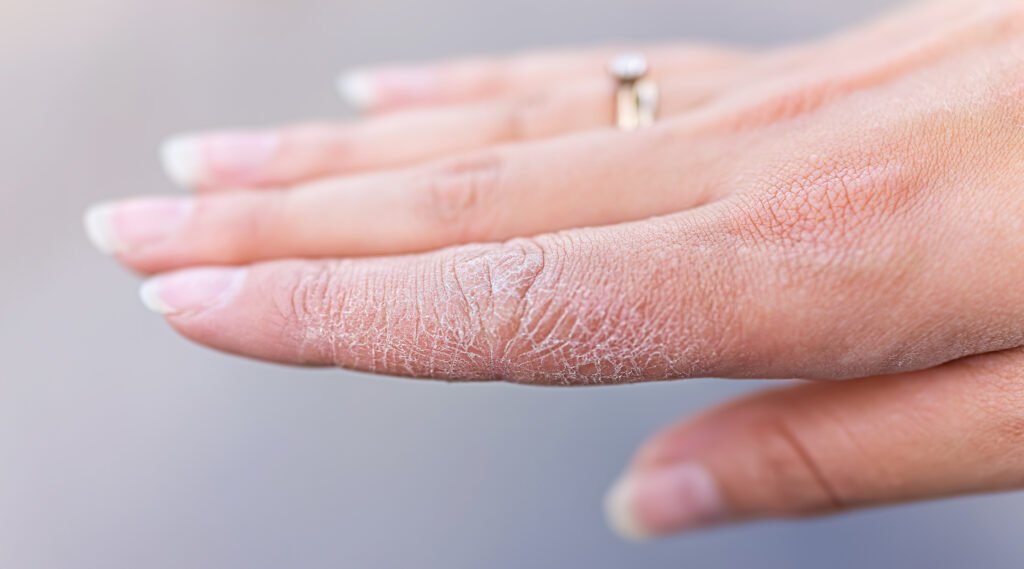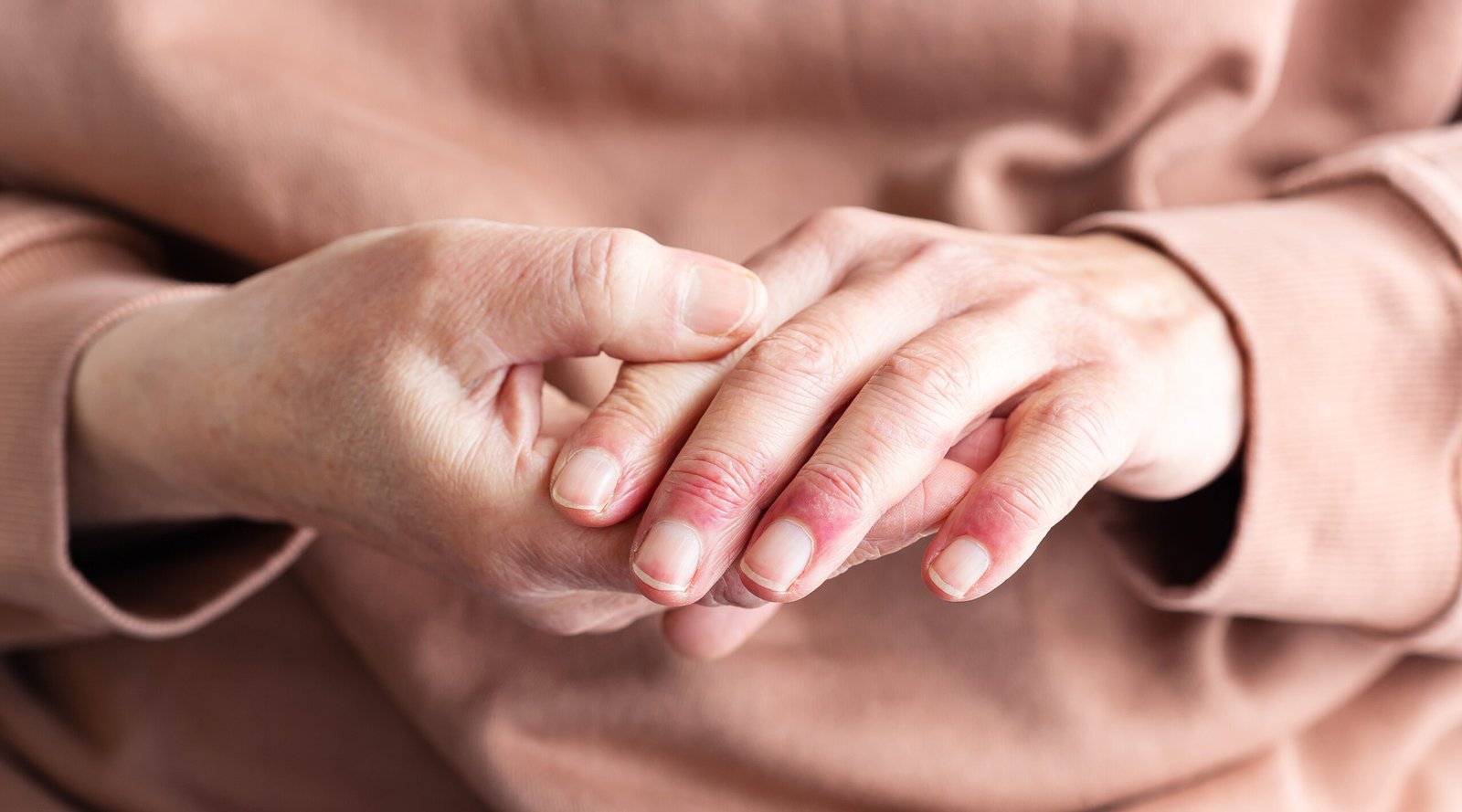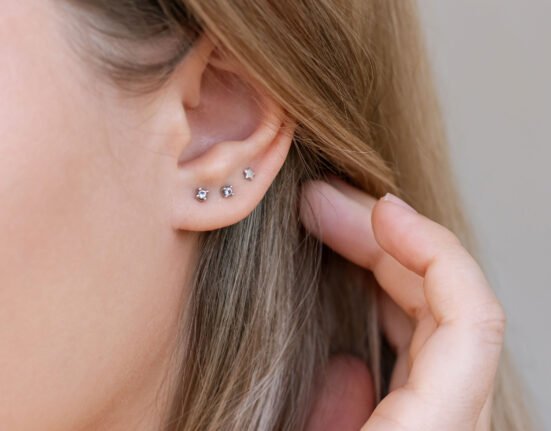Hand eczema isn’t just about dry skin. This condition can make your hands feel sore, itchy, cracked, and even bleed.
As a result, daily activities like typing, washing dishes, or simply holding a pen can become real challenges.
The good news is that, with proper care, the symptoms can be managed and prevented from worsening.
Why Does Eczema Easily Appear on Hands?
Skin with atopic dermatitis (AD) has two main weaknesses:
- It cannot retain moisture as well as normal skin.
- The immune proteins in the skin are altered, making its response to germs and certain substances less effective.
On top of that, our hands are the body parts that “work” the most. They come into contact daily with soap, water, germs, sweat, chemicals, extreme temperatures, and rough surfaces—no wonder the hands are more prone to eczema compared to other areas.
Symptoms of Hand Eczema to Watch For

Hand eczema usually begins with dry, cracked skin. But over time, the symptoms can become more troublesome. Some common signs include:
- Skin changes: red patches (or purplish-brown on darker skin), thickened and scaly skin, or swelling in the fingers.
- Surface disruptions: small fluid-filled blisters (often between the fingers or on the palms), peeling skin, and deep cracks that may bleed. These blisters can last 3–4 weeks.
- Physical sensations: intense itching, burning, or pain.
In severe cases, eczema can interfere with simple tasks like buttoning a shirt or typing on a keyboard. Without treatment, the condition may become chronic.
How to Manage Hand Eczema
Eczema won’t disappear overnight, but its symptoms can be controlled.
Here are some steps you can take:
1. Reduce excessive exposure to water and soap
Use hand cleansers as an alternative, but choose ones that are fragrance-free and alcohol-free. Soaps that lather a lot can strip the skin’s natural oils and worsen eczema.
2. Avoid “degreasing” dishwashing soaps
Their ingredients can dry out and irritate the skin. If you need to wash dishes, wear vinyl gloves. Avoid rubber gloves since they may trigger allergies. Remember, vinyl gloves can make your hands sweat, so don’t wear them for too long.
3. Use gentle, fragrance-free soap
When washing your hands, use just a small amount on your palms. Avoid the backs of your hands, where the skin is thinner and more prone to irritation.
4. Moisturize regularly
Apply moisturizer whenever your hands feel dry. Choose products that are fragrance-free and free from harsh preservatives.
One option you can try is wund+™ Regeneration Cream. This cream helps moisturize dry, cracked skin while supporting skin regeneration.
Its Panthenol and Glycerin content helps repair the skin barrier, while its antimicrobial effect keeps the skin healthy.
Hand eczema can be disruptive, but it’s not unmanageable. By avoiding triggers, maintaining good hygiene, and using the right moisturizer, you can relieve symptoms and keep your hands comfortable for daily activities.
Don’t wait until the symptoms get worse. Start taking care of your hands today!
If you’ve tried these tips but the eczema still keeps coming back, it may be time to consult a dermatologist for more targeted treatment.
References
British Association of Dermatologists. Accessed in 2025. Hand dermatitis (hand eczema).
MamaHealth. Accessed in 2025. Hand Eczema Best Creams: A Dermatologist’s Guide to Instant Relief.
National Eczema. Accessed in 2025. Managing Eczema on Your Hands and Feet.














Leave feedback about this